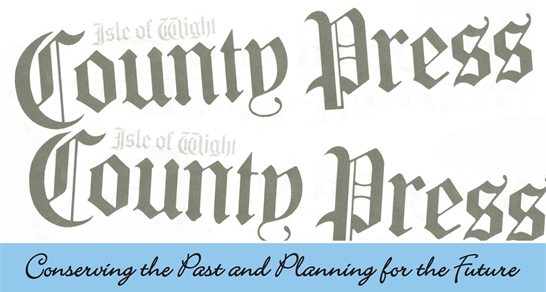September 2020
The transport revolution
When did you last walk from Cowes to Newport? Or from Newport to Chale? Walk being the operative word!
Only 150 years ago, for most people, walking was the only option.
Walk up to St Catherine’s Down and you have a seat halfway up to the Pepperpot, with a mackerel engraved upon it. Near here a man would sit and watch out for the mackerel shoals, and then rush to get the fishing boats to sea and make a good catch of fish. The next task was to walk to market in Newport to sell the fish, then walk home again. The people would need to be fit.
View from the Mackerel Path
Men would walk from Newport to Cowes or East Cowes to work in the shipyards during the 1800s. At least two Blacksmiths lived in Newport, but for months walked daily to their work at the Queen’s forge at Whippingham, until accommodation could be found for them and their families in the village.
In the 1800s the carrier’s cart was another way of getting to market in Newport. If the tide was right, ferry boats ran from East and West Cowes to Newport on market days.
In 1862 the first Island railway opened from Cowes to Newport. There were three classes of carriage, and by 1869 a single ticket first class cost 1 shilling, 2nd class cost 9d and third class cost 6d. Other lines rapidly opened until the Island had a good coverage from Bembridge to Freshwater. There were special trains laid on for the “working classes!” The cost of running a railway line on mainly the profits of the summer tourist was not economic. Industries such as brickmaking and cement making made good use of railway transport, but as these closed down in the face of cheaper products from the mainland, several railway lines closed early in the 1950s.
IOW Railway Timetable
The internal combustion engine revolutionised transport. As Mr House, Manager of the firm LIFU which made steam powered vehicles on the Island said in 1899, “Motor vehicles are here to stay, and their numbers will increase on Island roads!” This was after his trial for speeding down York Avenue, East Cowes, at 18 miles an hour, double the speed limit, the first court case for speeding on the Isle of Wight.
Bus and charabanc services came into their own in the 1920s and 30s, and the “Parking Problem” began. Attractions had to make dedicated parking areas.
Groves Garage, East Cowes
The first roll on-roll off ferry services were started by the Southern Rail ferries in 1938, with Red Funnel starting ro-ro in 1948. Marshalling areas for ferry traffic have expanded ever since.
Have we discovered during lockdown that we need to walk to stay fit? Have we discovered the pleasure of walking again? Can we keep up the momentum now? Or will we revert to sitting in a metal bubble behind a steering wheel and twiddling our feet on the pedals?
This Island was made for walking! Let’s walk it!
Sarah Burdett
[Go Back]

